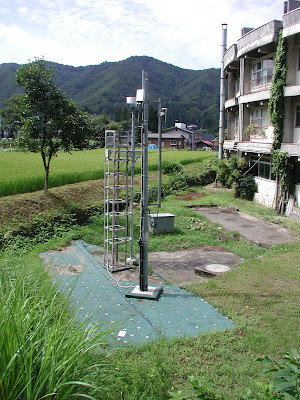Over a month has passed since our last fieldwork at Takiya River. This summer has turned out to be very hot and dry, and river levels are very low throughout Niigata. The hydrograph above shows there has only been two or three rainfall events in the past 5 weeks! There are two very long periods of flow recession without any rainfall. The influence of the forest vegetation evapotranspiration on the low flows can be seen by the daily fluctuations over the past two weeks.
Although this is high season for leeches and horseflies, we were only hassled by a few of the latter. The very dry conditions this year have kept the number of insects to a minimum.
Of particular note is that the authorities have removed all the fallen trees from the river below the gauging point. About 10 fallen cedar trees in total were removed. Apart from the caterpillar tracks on the river bank, the negative impacts on the river environment seem to be minimal.
 |
| Taking a discharge measurement (stage = 42cm, water temperature = 21 C) |
 |
| All the fallen trees have been removed from the river below the gauging point |





